Copyright 2016 by Jay McCullough
All rights reserved. No part of this book may be reproduced in any manner without the express written consent of the publisher, except in the case of brief excerpts in critical reviews or articles. All inquiries should be addressed to Skyhorse Publishing, 307 West 36th Street, 11th Floor, New York, NY 10018.
Skyhorse Publishing books may be purchased in bulk at special discounts for sales promotion, corporate gifts, fund-raising, or educational purposes. Special editions can also be created to specifications. For details, contact the Special Sales Department, Skyhorse Publishing, 307 West 36th Street, 11th Floor, New York, NY 10018 or .
Skyhorse and Skyhorse Publishing are registered trademarks of Skyhorse Publishing, Inc., a Delaware corporation.
Visit our website at www.skyhorsepublishing.com.
10 9 8 7 6 5 4 3 2 1
Library of Congress Cataloging-in-Publication Data is available on file.
Cover design by Tom Lau
Print ISBN: 978-1-5107-0744-3
Ebook ISBN: 978-1-5107-0749-8
Printed in the United States of America
Table of Contents
Introduction
Just as there is no struggle as primitive and desperate as hand-to-hand combat, there is no substitute for practical combat training. In this book of materials culled from various U.S. Army publications, you will find not only an excellent introduction to this discipline, but also a valuable resource for those whose skills have become rusty. This book is especially notable because it is drawn from decades of real combat experience; it is a distillation of techniques that work, tips to avoid potential problems, and eschews poor practices that would put a soldier at a fatal disadvantage.
So too, would it be a serious disadvantage not to know how to seek and maintain cover, create camouflage, analyze the position and disposition of an enemy through tracking skills, conduct basic navigation, and structure a scouting party in day or night. Here you will find the basics as described by the U.S. Army as the necessary knowledge for foot soldiers.
Here also you will find simple, timeless field expedients for starting fires, building elementary weapons, and storing and cooking food. Practicality is perhaps this manuals strongest suit: it was prepared by the Army for Everymanor womanto be near-universal, easy-to-comprehend, no-nonsense, and inclusive of methods that have passed the test of time and that are in some cases more ancient than our own species.
Similarly, to begin where we started: there is no substitute for practical training. If we would be prepared for any eventuality, as the Army has seen fit to do with its training manuals, it would be wise to commit these techniques to memory, and to practice them as necessary.
Jay McCullough
April 2016
North Haven, Connecticut
CHAPTER 1
FIRECRAFT
In many survival situations, the ability to start a fire can make the difference between living and dying. Fire can fulfill many needs. It can provide warmth and comfort. It not only cooks and preserves food, it also provides warmth in the form of heated food that saves calories our body normally uses to produce body heat. You can use fire to purify water, sterilize bandages, signal for rescue, and provide protection from animals. It can be a psychological boost by providing peace of mind and companionship. You can also use fire to produce tools and weapons.
Fire can cause problems, as well. The enemy can detect the smoke and light it produces. It can cause forest fires or destroy essential equipment. Fire can also cause burns and carbon monoxide poisoning when used in shelters.
Remember to weigh your need for fire against your need to avoid enemy detection.
BASIC FIRE PRINCIPLES
To build a fire, it helps to understand the basic principles of a fire. Fuel (in a nongaseous state) does not burn directly. When you apply heat to a fuel, it produces a gas. This gas, combined with oxygen in the air, burns.
Understanding the concept of the fire triangle is very important incorrectly constructing and maintaining a fire. The three sides of the triangle represent air, heat, and fuel. If you remove any of these, the fire will go out. The correct ratio of these components is very important for a fire to burn at its greatest capability. The only way to learn this ratio is to practice.
SITE SELECTION AND PREPARATION
You will have to decide what site and arrangement to use. Before building a fire consider
The area (terrain and climate) in which you are operating.
The materials and tools available. Time: how much time you have?
Need: why you need a fire?
Security: how close is the enemy?
Look for a dry spot that
Is protected from the wind.
Is suitably placed in relation to your shelter (if any).
Will concentrate the heat in the direction you desire.
Has a supply of wood or other fuel available. (See for types of material you can use.)
If you are in a wooded or brush-covered area, clear the brush and scrape the surface soil from the spot you have selected. Clear a circle at least 1 meter in diameter so there is little chance of the fire spreading.
If time allows, construct a fire wall using logs or rocks. This wall will help to reflector direct the heat where you want it (). It will also reduce flying sparks and cut down on the amount of wind blowing into the fire. However, you will need enough wind to keep the fire burning.
 CAUTION
CAUTION
Do not use wet or porous rocks as they may explode when heated.
In some situations, you may find that an underground fireplace will best meet your needs. It conceals the fire and serves well for cooking food. To make an underground fireplace or Dakota fire hole ()
Dig a hole in the ground.
On the upwind side of this hole, poke or dig a large connecting hole for ventilation.
Build your fire in the hole as illustrated.
Table 1-1: Materials for Building Fires


Figure 1-1: Types of fire walls

Figure 1-2: Dakota fire hole
If you are in a snow-covered area, use green logs to make a dry base for your fire (). Trees with wrist-sized trunks are easily broken in extreme cold. Cut or break several green logs and lay them side by side on top of the snow. Add one or two more layers. Lay the top layer of logs opposite those below it.

Figure 1-3: Base for fire in snow-covered area
FIRE MATERIAL SELECTION
You need three types of materials () to build a firetinder, kindling, and fuel.
Tinder is dry material that ignites with little heata spark starts a fire. The tinder must be absolutely dry to be sure just a spark will ignite it. If you only have a device that generates sparks, charred cloth will be almost essential. It holds a spark for long periods, allowing you to put tinder on the hot area to generate a small flame. You can make charred cloth by heating cotton cloth until it turns black, but does not burn. Once it is black, you must keep it in an airtight container to keep it dry. Prepare this cloth well in advance of any survival situation. Add it to your individual survival kit.

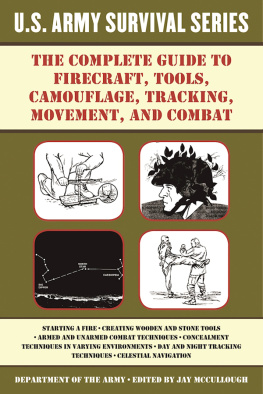
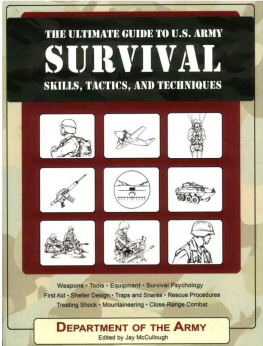
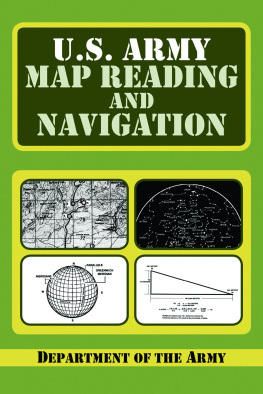
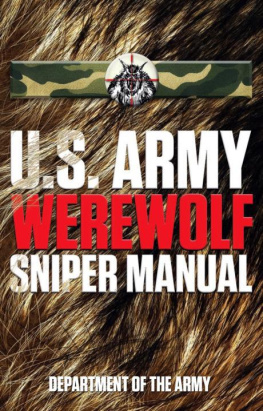


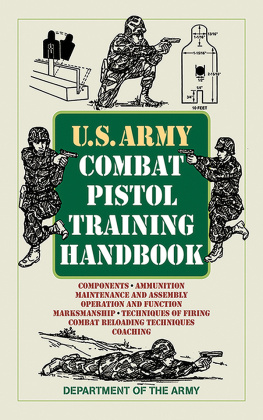
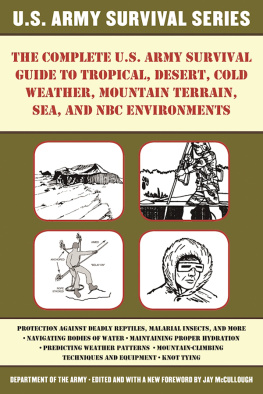
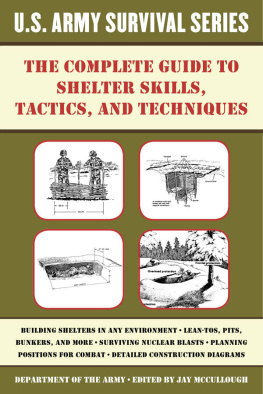
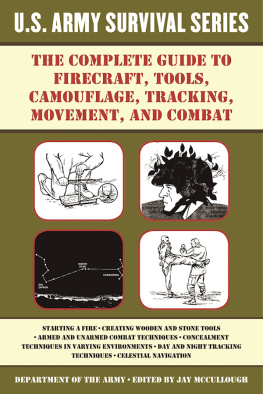
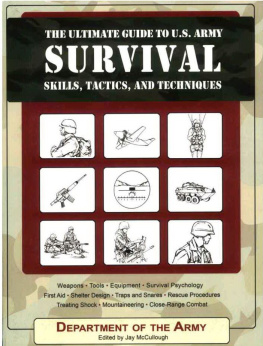
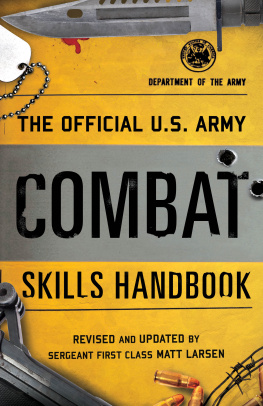
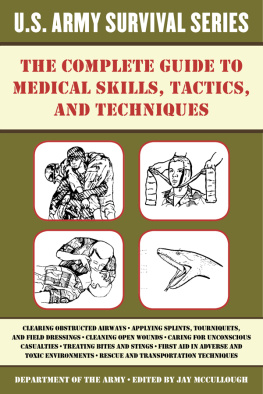
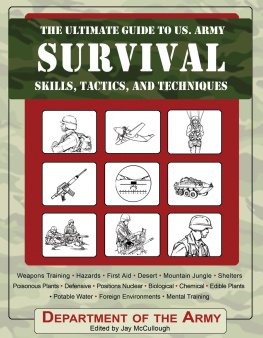
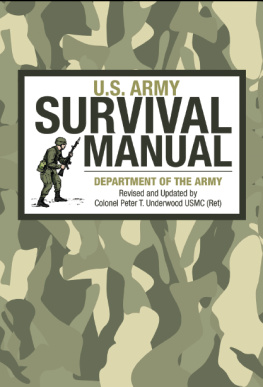


 CAUTION
CAUTION


